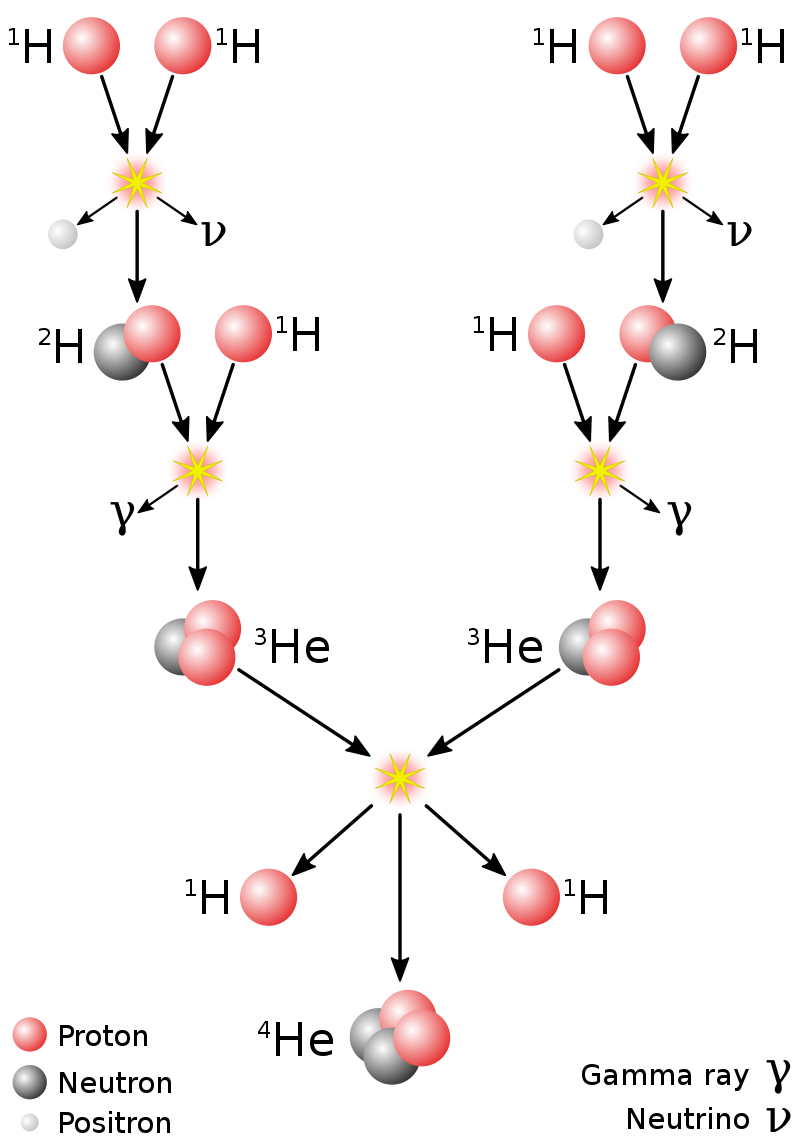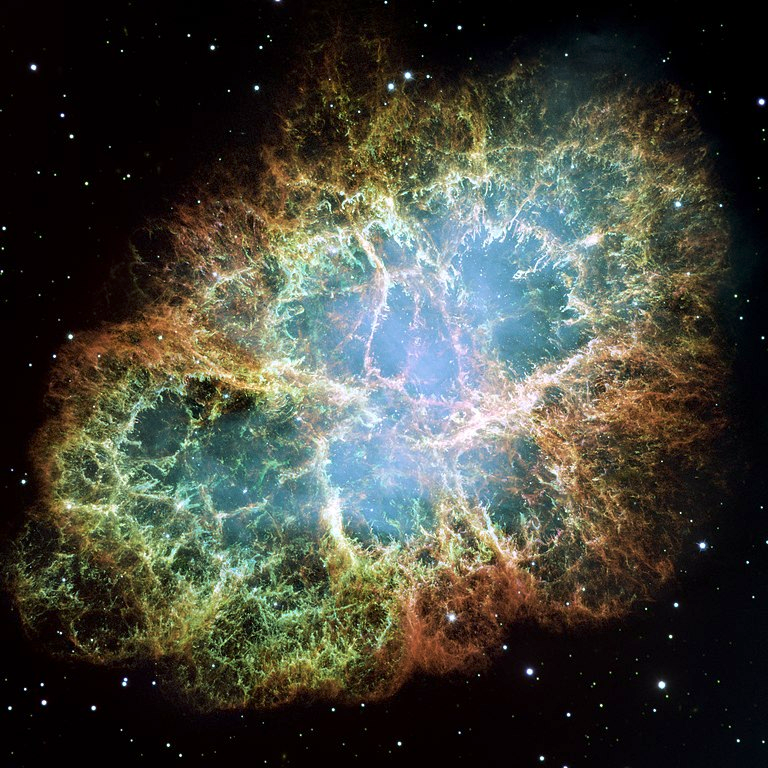Stars
What are Stars?
When you look outside, stars look like tiny dots of light, maybe with some twinkling. However, in reality, stars are titanic spheres that emit enormous amounts of energy in the form of light and heat. Below is an image of the Sun, which is a star:

Stars are some of the most numerous objects in the universe; there are 200-400 billion stars in the Milky Way alone.
How Stars Produce Energy
Stars produce their energy via a process called nuclear fusion, which happens in the cores of stars. It works by squeezing together hydrogen atoms until they turn into a helium atom This releases a huge amount of energy. As you'd imagine, it takes a very big star and a LOT of energy (heat) to make nuclear fusion happen. This reaction is called the proton-proton chain reaction.

Composition of Stars
Stars are about 90% hydrogen and 10% helium. The element helium was actually first discovered in the sun (a star). Tiny traces of heavier elements can also be found.
The Lifecycle of a Star
Stars start from giant clouds of gas, called nebulae (the singular form in nebula). Nebulae are mostly made up of hydrogen and helium, with traces of heavier elements. This composition is reflected in the composition of stars.

The gas and other particle clump together to form proto-stars after a period of time. These proto-stars will attract each other by gravity.
